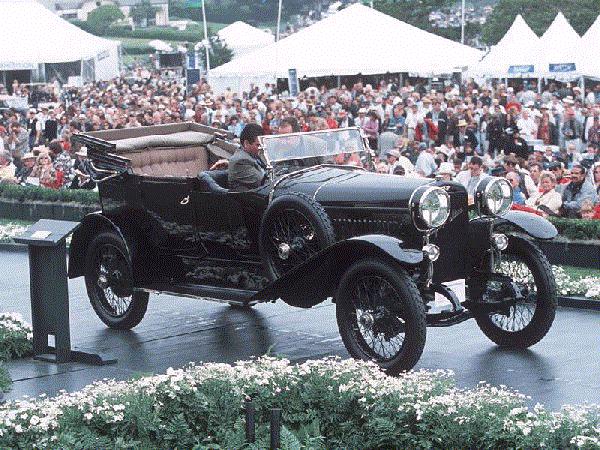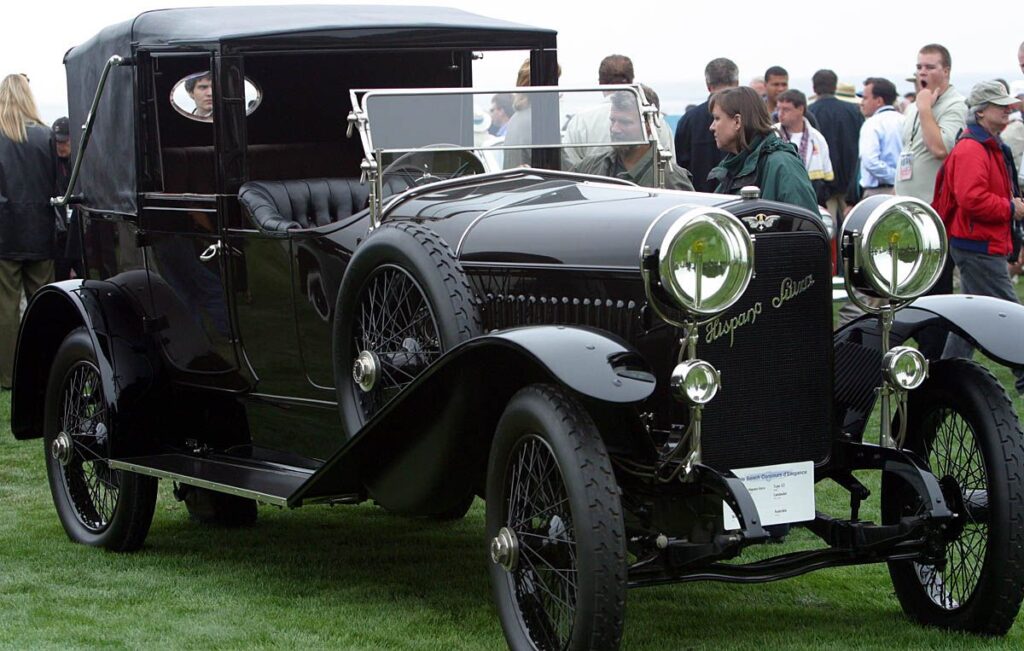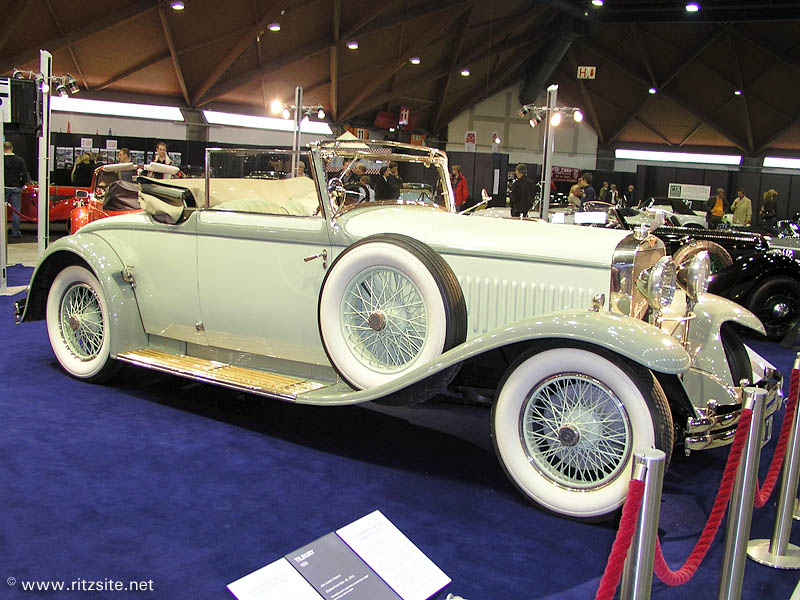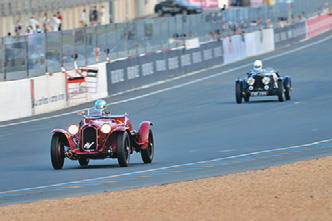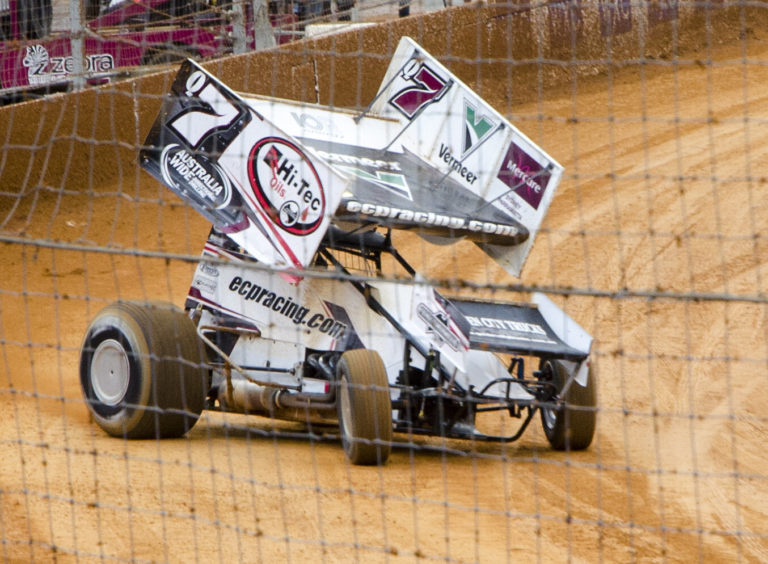For a mayor under pressure, the typical Kiwi shed is a mental refuge and a vintage car haven
By Dave McKinnon
Photographs: Dave McKinnon

The morning we visited this particular sheddie, the bloke was under fire. In The Press, he was being slagged off on the front page. Inside the paper, a swag of writers was pinging him this way and that in letters to the editor. Christchurch is a hotbed of political discontent these days and the buckshot stops with the mayor Garry Moore.
So he’d be in no mood to spend a lovely spring Saturday morning talking to a complete stranger about something as mundane as his not-quite-finished shed? Wrong.
“I love my shed. It’s my refuge, my mental-health restorer. My family say I’m only ever absolutely myself when I’m in my garage. Hell, I’ve had some fun in it. Out here, my mates don’t form subcommittees, they don’t plot behind my back and they don’t write to the newspapers.
“I can get hacked off out here when things aren’t going right, but then I can shut the door, knowing that when I come back the car will be sitting there waiting patiently for me to get started on it again.
“I just love sheds. They say an Englishman’s home is his castle but I reckon a Kiwi’s heart is his shed. I’m just a Kiwi bloke who sometimes leaves his shed to become mayor.”
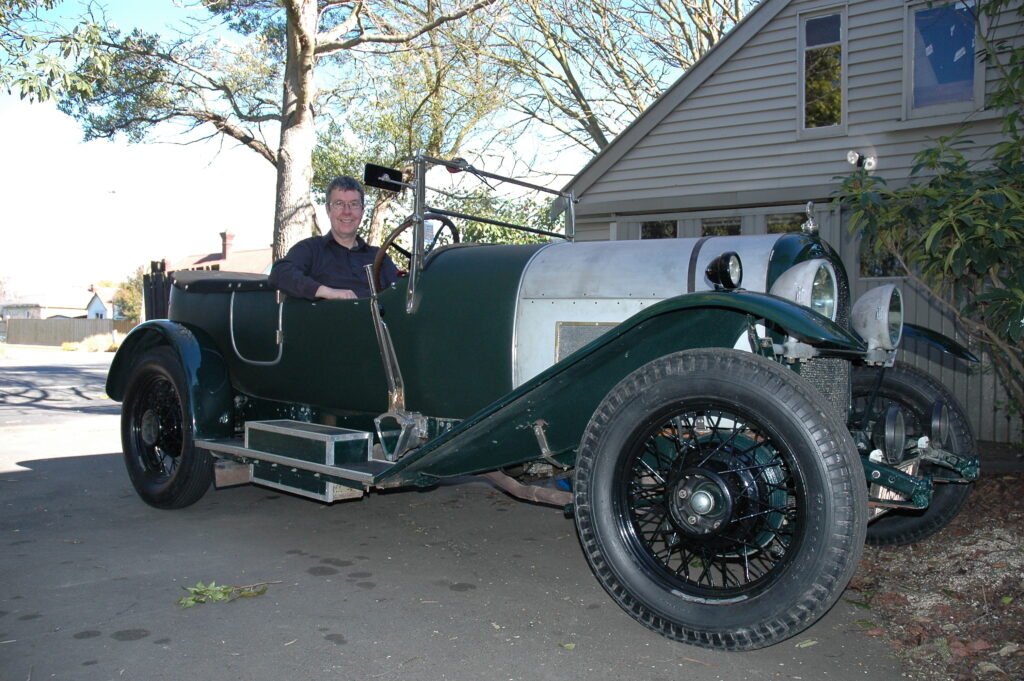
Vintage cars
This story is as much about vintage cars as the shed itself, for the cars are the raison d’être for the shed. To tell it properly, we have to go back to 1959 and Palmerston North. There was this eight-year-old kid who used to find himself distracted from his daily walk to St Patrick’s convent school by a 1924 30/98 Vauxhall parked along the way. As it happens, the old car is now in Christchurch, as is that wide-eyed youngster who just happens to be mayor of the Garden City.
Says Moore, “I can still remember the Vauxhall’s rego number: CS1924. It was owned by Brian Wycherley who later became a client and good friend of my father (Garry’s father was a mechanic in Palmerston North for 55 years). A mate of mine here owns the car now. A magnificent car. It kindled my interest in old motorcars. Standing on its running board kindled in me a passion.”
His bio on the City Council website says he moved to Christchurch in the 1970s because the Vintage Car Club was formed here and there are lots of roads in the city’s environs suitable for vintage motoring. It sounded a bit glib to us but that, folks, is exactly why he came to Christchurch.
Because of his father, young Garry was always around mechanics and car enthusiasts; Wanganui upholsterer and panel-beater Bert Tonks was among them.
“He used to take me on rallies in the back of his beautifully restored 1912 Daimler with its magnificent, green leather-buttoned seats.”
Garry’s Dad joined the Vintage Car Club in about 1963 and purchased a 1930 Austin Seven. The virus crossed the generation gap with ease.
“I took that car apart in 1965 and it’s never been put together again since. It’s in the garage here.”
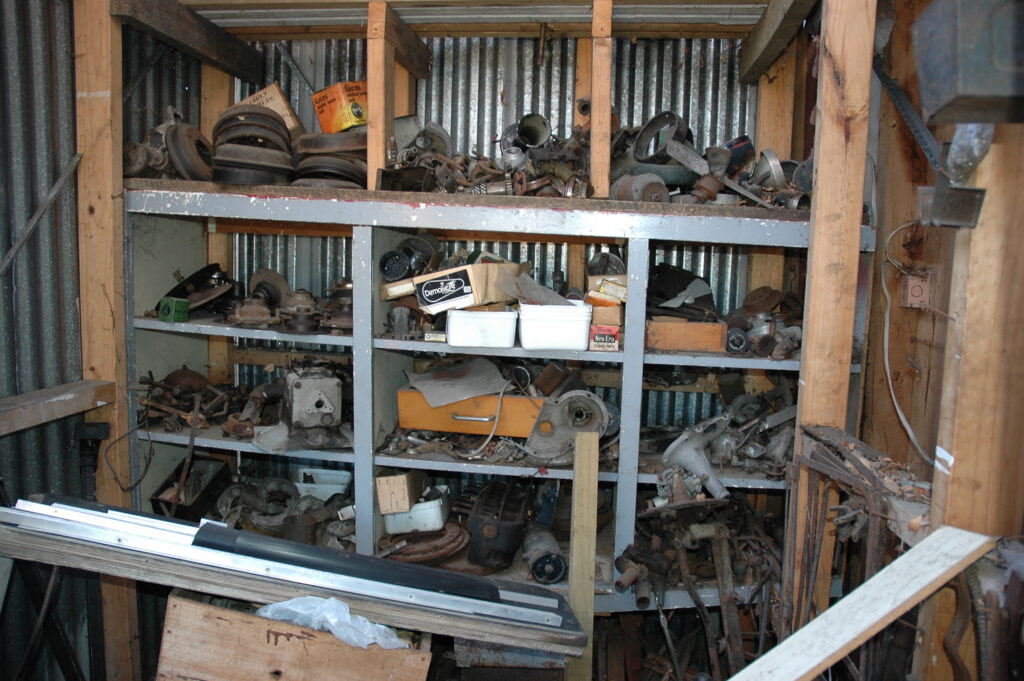
First car
Garry bought his first car in 1968 while he was still at school. He owned that 1937 Austin Seven Nippy for nine years and he reckons he clocked up 37,000 miles in it.
“My mum begged me not to sell it because she said I would have kids who would enjoy it, and doing so remains one of my life’s few regrets.”
He moved on to accept, from collector and broadcaster Peter Fry, an Austin Sports Twenty that two-time New Zealand prime minister (and former mayor of Bluff) Sir Joseph Ward had imported new in 1921. They made only 50 of them and there are now only two left in the world (that was the case when Garry obtained his).
Then a 1927 14/40 Vauxhall chassis entered the frame. As time went on, Garry still owed his Dad $100 lent for the Vauxhall purchase. To remedy the debt, Garry sold the Sports Twenty to a fellow who brought it to Christchurch and restored it; it now lives in England.
Garry proceeded to have the 14/40 bodied in Levin but reality in the form of a second mortgage prevailed some years later and it, too, was sold. Garry then went for a year without owning a vintage car, the last period in his life he was ever to languish in such purgatory. Relief came in form of the car that was to become an icon in Christchurch, his pale yellow 1927 Austin Seven.
“It was little more than tattered remains when I bought it. It gave ‘buggered’ a whole new meaning. Most of it was in a box that fitted under a bench in my mate’s workshop.”
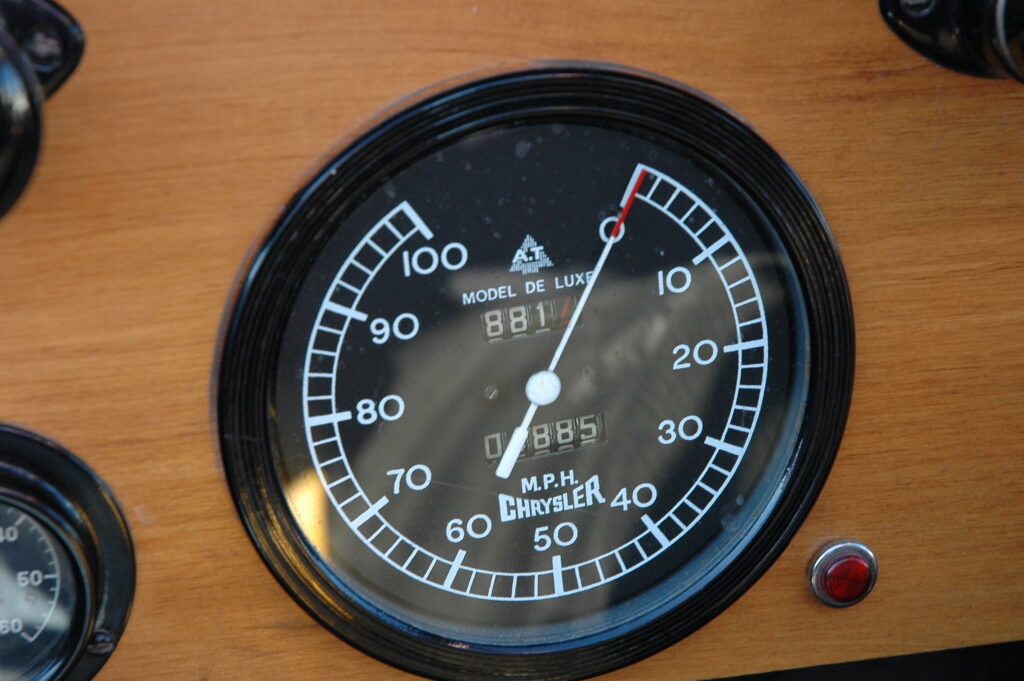
Terrific car
In his public duties, Garry Moore does not wear his passion on his sleeve, but he has been known to wheel the “terrific” little car out on the odd public occasion. He has owned it for 20 years and has clocked up to 40,000 miles in it.
He says you can never be a fully blooded Austin Seven driver until you’ve rolled one onto its side. He proudly reports his older son joined the ranks last year in the yellow one “… on the Irishman Creek run, my favourite.” Austin Seven lore has it that the trick when rolling one onto its side at slow speed is to resist the temptation to stick your arm out of the window onto the ground to stop it turning over completely. One of Garry’s mates failed this test when he rolled the car years ago and broke his arm.
But back to the shed. At a certain point in Garry’s early life things had gotten a bit shambolic out the front of the Shirley villa (it has now been the family home for 27 years). He had spent three years demolishing old buildings to make way for a new garage. The new Moore shed, to be built complete with mezzanine, needed only $400 worth of new materials. But piles of lovingly stacked old timber were waiting, posing a hazard. The family gave him an ultimatum and he made a serious decision in response.
“Pam had gone back nursing and I was getting sick of accountancy, so I decided to become a housefather and build the new garage.” That resolution lasted a year, with his son home from kindergarten to join in.
“Pam got pregnant again and as I was half responsible I had to go back to work. I never finished the garage. But now I am going to finish it.”
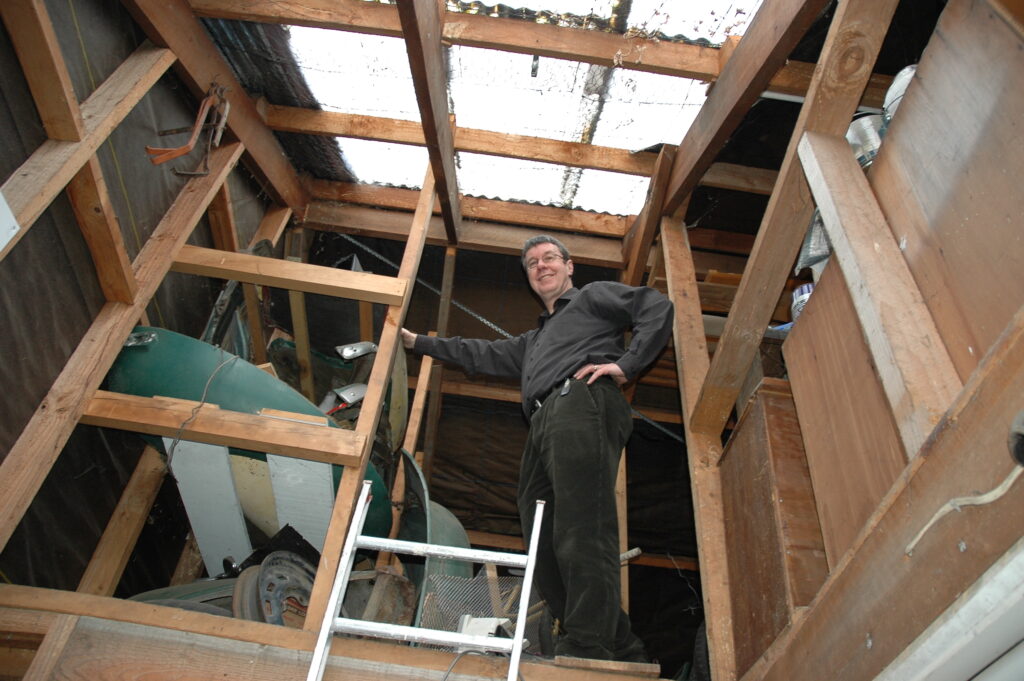
MoMs
Vintage Car Club members never have enough room in their sheds anyway, he adds.
In its partly finished state, this shed became and still is something of a cultural centre for a group we shall call the MoMs (“mates of mine” that figure in just about every second sentence Garry utters in reference to cars). They are integral to the Garry Moore story: “I could never have done what I’ve done without my mates. I’m an incompetent but with great mates.”
As a group, they started working on three Austin Sevens, the yellow one and two more. The idea was to share labour, ideas, expertise and parts in a convivial environment. The flavour of this industry can be gleaned from one recollection:
“We used to have what we called Men’s Group on Wednesday nights. When Pam came out to fetch me to the telephone one night, there were ten blokes in the shed; one was working on one of the cars and the other nine were standing around drinking beer and telling lies.”

Dream tourer
Austin Sevens loom large throughout the Moore story, but over the years Garry was nurturing a dream — or, to be more accurate, a dream car. He determined to build his own quintessential, vintage open tourer. And what a car it is.
“I knew exactly what I wanted. For the right handling characteristics and to take the body style I wanted, it had to have a wheelbase between nine feet six (2.89 metres) and nine feet ten (2.99 metres) long. I wanted a lazy engine with big bore, shell bearings and lots of bottom-end torque capable of pulling it along at sixty to eighty miles an hour (96km to 128km an hour) all day. And it had to have that absolute affectation, an outside gear change.”
It took 11 years to build. Finished for two years now, it has lived up to all his expectations. It has torque to burn, negotiating city roundabouts in top gear without any hint of a shudder. Old vehicles have trouble footing it with modern traffic but not this beast. When he floors it in top, it takes off just like a modern car.
The four-litre engine (1958 as it turns out — Chrysler built essentially the same donkey for nearly 60 years) produces 119 brake horsepower; the car has been dynoed at 80bhp at the back wheels. Garry says the chassis and body are each light enough for him to be able to lift, so there is probably a not-inconsiderable power-to-weight ratio in the mix.
The 55-year-old has been surrounded all his life by skilled tradesmen but he makes no claim to great mechanical skills himself, so a good deal of MoM input was always part of the plan.
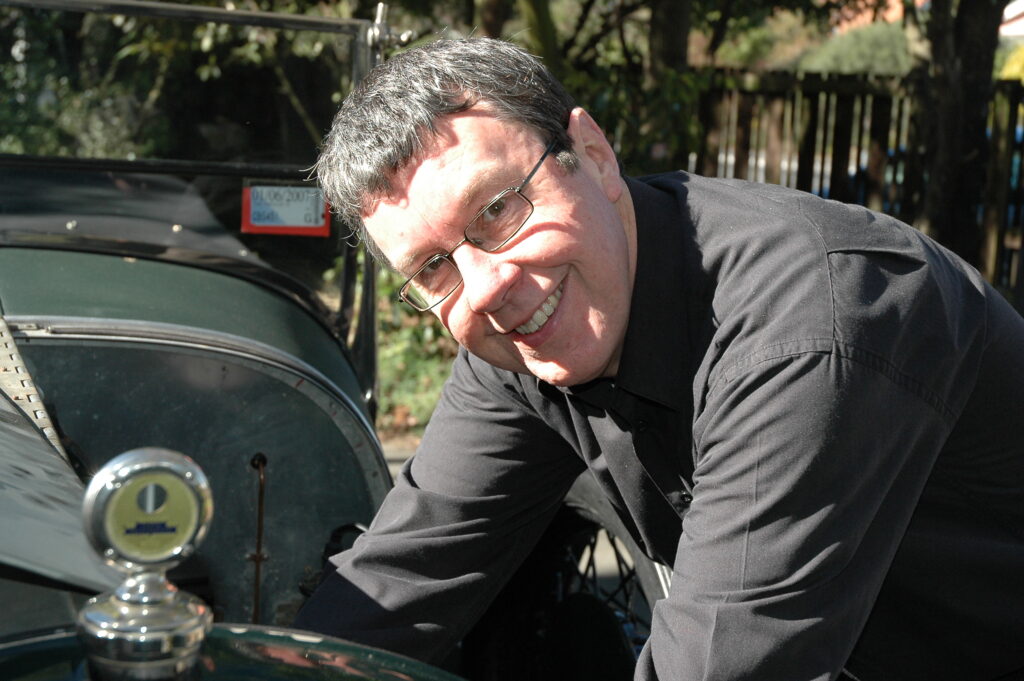
Under-tightening
“I probably have above-average skills on a motorcar, but I need a lot of advice and assistance. One of my many faults is I under-tighten things. It comes from years of working on Austin Sevens where bolts and studs are so small that it’s very easy to shear them off.”
He does however have three specific goals, apart from finishing the shed: to learn how to use a lathe – he and one of his MoM group are presently buying a second-hand one – how to spray-paint and how to upholster.
The Chrysler Special is the very definition of a one-off. They started with a Maxwell radiator, which was soon discarded in favour of a Chrysler, one that enabled a better body shape, and a Plymouth chassis. The subsequent decade forms an heroic saga of hunting-and-gathering laced with miraculous acquisitions, serendipitous internet purchases and generous contributions by one or two who have never lived to see her roll. There is probably a decent book in it.
Garry maintains there are no two parts in his car that were ever on the same vehicle previously. It’s the kind of project vintage car purists love to hate. Because it has Chrysler bones, it’s officially called a Chrysler by “Magpie Motors.”
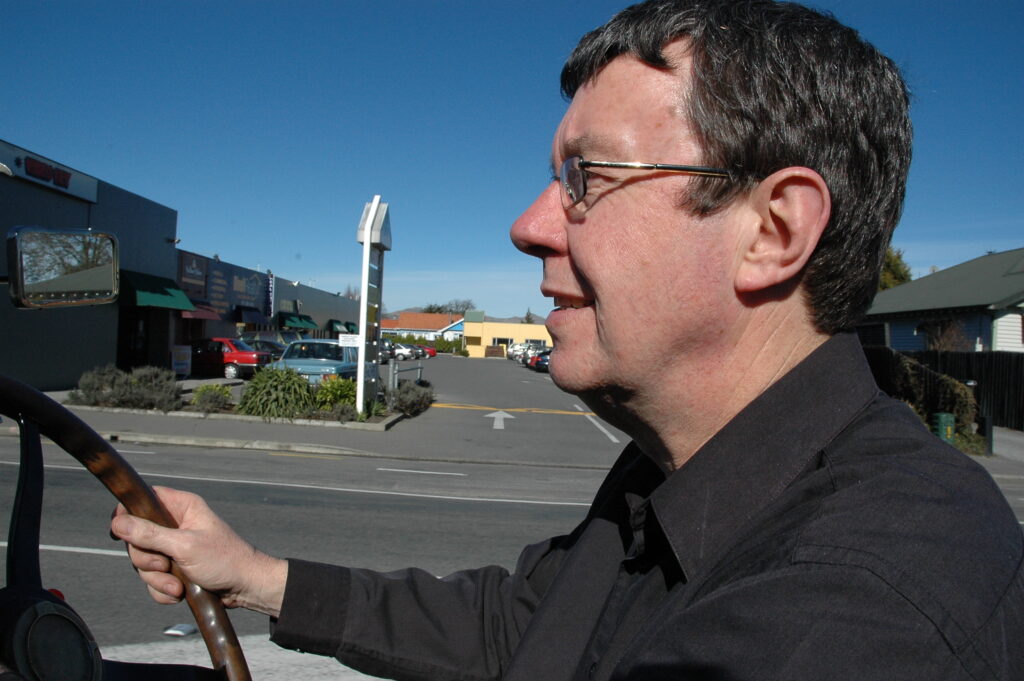
Rimu dashboard
It has Chrysler-badged instruments but the rev counter is out of a Rolls Royce and the speedo is Jaguar XK-120 with a three-litre Bentley face. An MoM doctored the faces with Chrysler logos with his computer and they really do look the part. The dashboard is of 100-year old rimu removed from the ceiling of Christchurch Cathedral during the earthquake strengthening project in 2000. Another MoM is making clutch and brake pedals to match the genuine old accelerator pedal. A Chrysler steering wheel boss is coming from a similar source. Some bits, like the rubber tail light units, are commercially manufactured for vintage enthusiasts. You get the picture.
The only brand new components that we could find, apart from nuts and bolts, were the two sealed-beam units in the big headlights. The key thing is that mayor Moore built the car to drive and behave like a true vintage car; he’s more interested in driving it to enjoy driving and not interested in arguing whether it’s a genuine vintage or not. It even has a Holden diff (3.08:1).
The Chrysler Special is the pinnacle of Garry Moore’s vintage vehicle aspirations. It was dreamed up by GM who had the body designed, built and skinned by his MoMs. The comparison he enjoys most is with an Hispano Suiza, for the general demeanour and so on. He does not plan to build another bigger, better, faster one.
“I’m essentially a vintage motorist. It’s a nice day today so I’ll probably kick the car in the guts and go for a blat somewhere.”
However, he did help his 26-year-old son Johnny with his recently purchased 1938 Plymouth, and now he talks wistfully of his Tauranga-based daughter’s partner having a plan to build a Ford V8 Special…
It’s an illness, you see, to which even mayors are not immune. And then, of course, there is the small matter of finishing the shed.
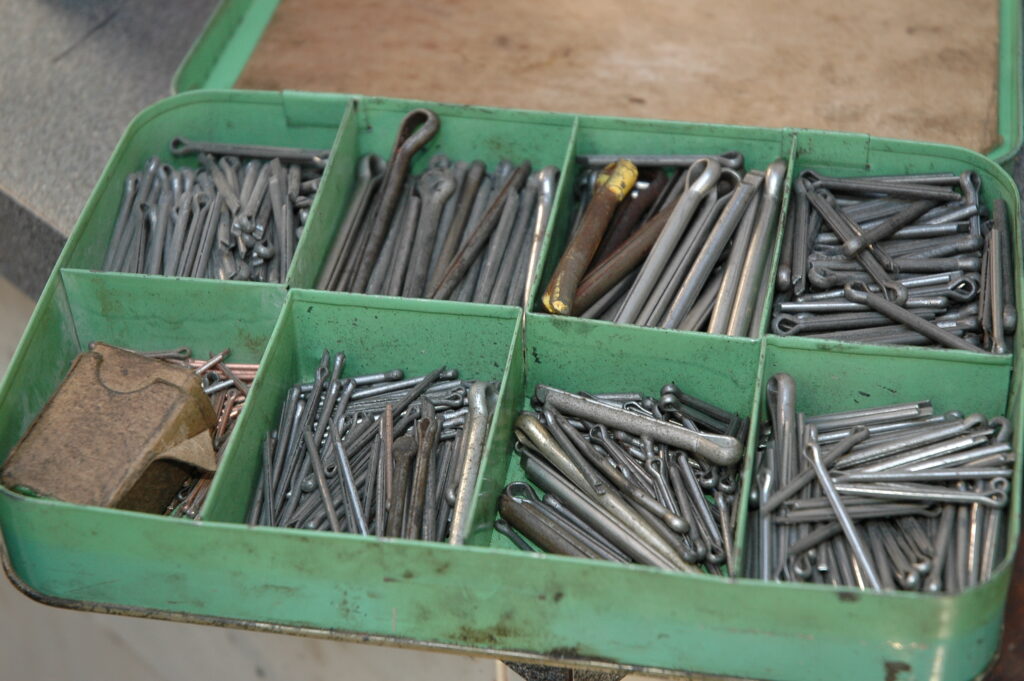
IRISHMAN CREEK – THE WINNER LOSES
Irishman Creek Station in the Mackenzie country was for years the site for a joint rally between the Canterbury and Otago vintage car clubs. The original 23,550 acres (9530 hectares) were bought in 1921 by Bill Hamilton of jet boat fame. In 1971, Garry Moore was the first North Islander ever to travel down to participate.
As he tells it, the rally got a bit big for Irishman Creek and the vintage car people were not especially well-behaved (they used to sleep in the woolshed and play up as young loutish lads do — “the boy-racers of their time” says GM).
It moved on to another venue, but Garry Moore was banned for three years because he was against the 1981 Springbok tour and the farmer was for it. Apart from that, he has attended every year.
The trophy for the event is the spigot from a bar keg out of an old Mackenzie country pub. The winner of the event is automatically appointed organiser for the following year. An enormous amount of effort goes into not winning, says Moore, who failed to come down the field in 2005 and had to organise it for 2006.
The event has been running for 52 years, and three of Garry Moore’s children joined him on it this year.
